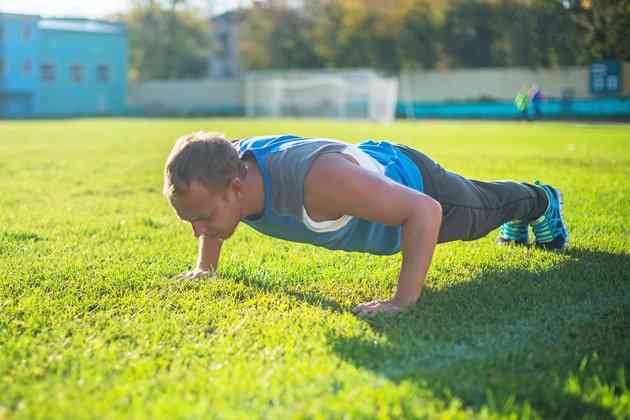How to Get Rid of Lower Back Fat

There's very little to love about love handles, muffin tops, spare tires or other manifestations of unsightly fat, which have a way of pooling around the waist and lower back, making halter tops or muscle shirts pretty much out of the question. Fortunately, there's a not-so-secret plan that is sure to make a difference. It's called diet and exercise.
 Diet leads the way for losing excess body fat. (Image: Erstudiostok/iStock/Getty Images)
Diet leads the way for losing excess body fat. (Image: Erstudiostok/iStock/Getty Images)Reality Check
Lower-torso fat is quite a universal complaint, which is why a lot of people have made a lot of money peddling plans and devices that promise to target this and other pudgy areas. While nobody has actually proven that there is no Santa Claus, there is definitely no such thing as spot reduction. You can wear rubber corsets, sweat until your brains trickle out your ears and do reverse crunches and cobras until the cows come home -- bit it won't budge fat from a specific area.
If you want that pudge to budge from your low back, you're going to have to lose overall body fat. Your metabolism doesn't care that you want to lose that roll around your middle first, but it will most likely disappear as your total body fat content diminishes. And for that to happen, you must lose weight.
Weight Loss 101
With so many weight-loss plans, why are giant fatbergs are still threatening to sink western civilization? There are many approaches to diet and many of them work -- at least for as long as you can stand them. Extreme low-carb diets may trick your body into ketosis and trigger rapid weight loss, but they don't have a great track record over the long run. Same goes for extreme low-fat diets. So what to do?
The first unalterable truth is that to lose a pound you must burn 3,500 more calories than you take in. Certain conditions, such as extreme insulin resistance, may complicate the picture for some, but for most of us the message is clear: You're going to carry that weight -- until you create a calorie deficit.
As it turns out, the fact that it takes 3,500 calories burned to lose a pound of fat works out quite neatly. Create a 500-calorie a day deficit and you've lost a pound a week. But it's important to lose that weight in a healthy way and at a reasonable rate. The National Institutes of Health recommends that you lose no more than 1 to 2 pounds per week. Shed pounds too rapidly and you're flirting with rebound weight gain as well as losing muscle mass instead of fat. That's also a hazard of some extreme diets, and it's exactly the opposite of what you want to do.
According to the National Institutes of Health, a healthy diet emphasizes vegetables, fruits, whole grains and lean meats, poultry and fish. Nuts, beans and eggs are good additional protein sources. For women, limiting intake to 1,200 to 1,500 calories a day should facilitate weight loss while for men or women who are exercising, 1,500 to 1,800 calories should do the job. You may not see that fat come off your back at first, but eventually it too will give way as you slim down.
Read More: 10 Ways to Reduce Body Fat Percentage
 Muscle burns more calories than fat. (Image: llhedgehogll/iStock/Getty Images)
Muscle burns more calories than fat. (Image: llhedgehogll/iStock/Getty Images)The Case for Exercise
In recent years, many studies have examined whether diet or exercise should lead the way in weight loss. For better or worse, the evidence comes out most strongly for diet, but exercise may be a key ingredient to keeping it off in the long run. A 2014 meta-analysis by the Academy of Nutrition and Dietetics found that programs that combine diet with exercise led to more sustained weight loss (three to four pounds) at a year than diet by itself. However, over a a term of six months, adding exercise did not increase weight loss.
That doesn't mean don't exercise. Activities that get your heart rate up like jogging, elliptical training or jumping rope will burn calories and tune up your metabolism. According to the National Institutes of Health, adults should do at least 150 minutes a week of moderate-intensity cardiovascular activity or 75 minutes of high-intensity exercise. And that's just the minimum. The more you do, the more benefits you'll receive. If you've been sedentary for a long time, however, it's important to work your way up gradually.
Resistance training at least twice per week builds muscle mass. The more muscle you've got, the more calories you burn, both when exercising and when at rest. That's a good reason to make resistance training a significant part of your overall fitness plan.
No specific exercise will make the fat from the lower back disappear. Instead, embrace compound exercises that work multiple muscle groups to give you the best calorie-burning and muscle-building results. Examples include chest presses, rows and squats.
Read More: A Pound of Fat vs. a Pound of Muscle




